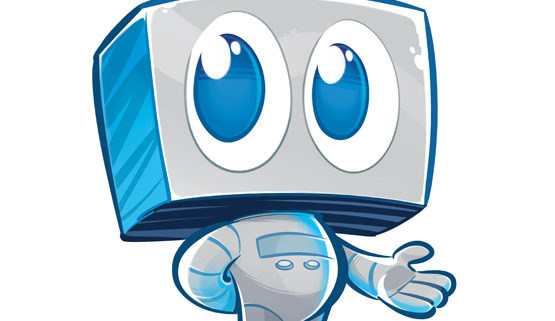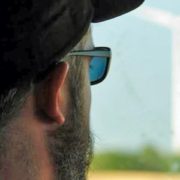 Two possible scenarios from the year 2035:
Two possible scenarios from the year 2035:
Business development telephone call
“Hi, Diane, this is Samar. Did you see the new RFP from the Palo Alto police?”
“Yeah, I got it right here. ‘Urban Disorder Suppression Vehicle.’ The kinetic package sounds nasty.”
“Your guys interested?”
“Sure. We’ll do the ISR. You do the vehicle platform. AMREL will do the Operator Control Unit.”
“Of course.”
“I think we can get Ruiz’s group to do the rail guns, napalm, and emetic gases.”
“What about the community image enhancement requirements?”
“That’s going to be tricky. I hear Big Time robotics is partnering with Warner, so I think we have to go with Disney. Since this is an Unmanned Aerial Vehicle, I’m thinking we can configure it as Tinker Bell or maybe Dumbo.”
“This is a really stupid requirement. Why do we have to make our unmanned systems look like cartoon characters?”
“Think about it, Samar. Say, you’re strolling down the quad at Stanford, and you look up and see a heavily armed flying robot. If it looks like Tinker Bell, are you going to think ‘death from the sky,’ or are you going to think ‘Isn’t that darling?’”
Move out for action
The Sergeant faced his mixed platoon of humans and unmanned systems.
“All right, gear up for a 2 day patrol. Murphy you take point. Goofy takes COMMS, while Smith does navigation. Smurfs, you’re on rear guard duty.”
Before they could move, the Forward Operating Base’s siren wailed.
“Tango 3 klics at 6 o’clock” someone yelled.
The Sergeant looked in the distance and saw a menacing bipedal unmanned system lumbering toward him. His heart sank when he saw that it was a Hello Kitty robot. He knew that his chances of seeing the end of the day just drastically diminished. No one survives Hello Kitty.
The triumph of cute
The above absurd scenarios took a giant leap toward plausibility, when Google revealed its latest video for a self-driving car. More than anything else, everyone commented on how cute the car was. The riders featured in the video said it was cute. Slate’s Future Tense devoted an article to all the cute things that Google’s car looks like. Megan Garber, writing in The Atlantic, said the car “…looks like a cross between a Volkswagen Beetle and a Disneyland ride.”
Garber takes Google’s embrace of cuteness seriously. She argues that cuteness will enable consumers overcome their anxiety about major technological changes. I think she has a point. How do you convince a skeptical public to get into a car that has no breaks or steering wheel? You make the car cute.
Autonomous cars are really just Unmanned Ground Vehicles with passengers as the payload. Does the cute car have implications for other unmanned systems?
Consider the hubbub about “drones.” All sorts of people are alarmed about Unmanned Aerial Vehicles (UAVs) and fears of Big Brother in the sky have been an obstacle to their adoption in the civilian market. Perhaps, the unmanned industry should imitate Google. Would that guy in Colorado still be selling drone hunting licenses, if UAVs looked like Tweety Bird or My Little Pony?
This is the flip side of the Uncanny Valley phenomenon, i.e. humanoid robots giving people the creeps. In Why you should care about the Uncanny Valley, I speculated, “Just as we have military standards (MIL-STD) for Electro Magnetic interference, we may one day have them for limiting the Uncanny Valley phenomenon. It may become a common specification in future robotic Request For Proposals (RFP).”
I can see now that I didn’t go far enough. Not only will we have specifications limiting the eeriness of unmanned systems, but we may also have requirements for making them adorable.
Corporate cuteness
Google’s car is generically cute and not associated with any specific character or cultural icon. However, there are several reasons why that may change. For one thing, the military, which is keenly examining Human Robot Interactions, wants to exploit private sector knowledge for its own purposes. If it is determined that we need endearing robots, why not go to the masters of cuteness? Companies like Hanna-Barbera and Disney have been make child-like characters for generations. Furthermore, the familiarity of cartoon characters would be a plus; studies have showed that soldiers prefer known brand names, rather than their generic equivalents (“Give me the real M&Ms rather than those knock-offs”).
The future will be stranger than we can imagine, but I seriously doubt a war fighter will ever meet death on a battlefield by a robot that looks like Bugs Bunny. However, I wouldn’t be surprised if one day our grandchildren will get a traffic ticket by an unmanned law enforcement system that looked like Pokémon.









